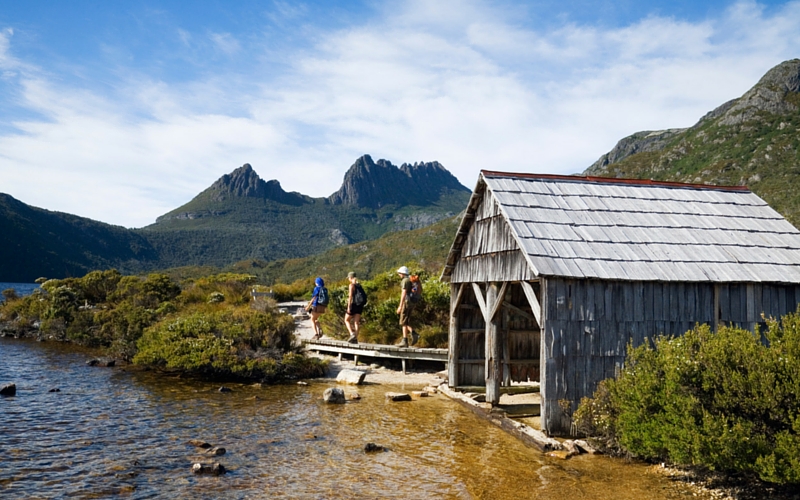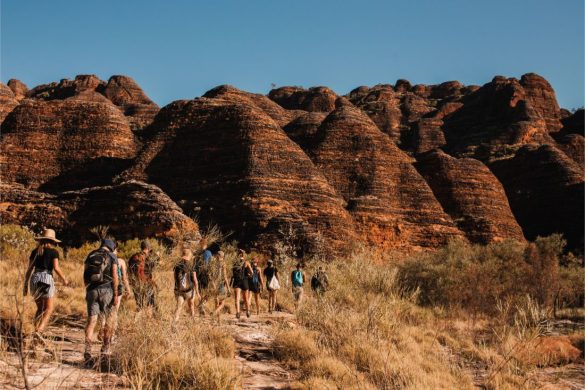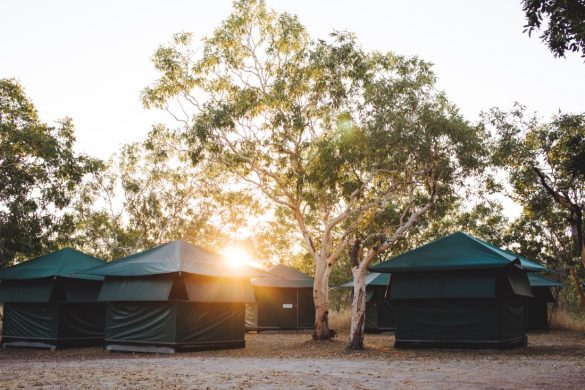You’d be forgiven for thinking Tasmania is just one big incredible national park, with its fern-shrouded gullies, soaring eucalypts, craggy granite cliff faces and inky black lakes. Head to the coast and the beaches verge on tropical (minus the balmy temperatures), while inland, snow-covered peaks like Cradle Mountain and Ben Lomand stand watch over the windswept heaths. The best way to explore the wilderness is, of course, on foot. There are thousands of Tasmania walks in countless parks across the State, but these are a few of our favourites.
Lake St Clair

Image c/o TassieEye, Flickr
Two and a half hours drive from Hobart is Lake St Clair, arguably one of Tassie’s most beautiful lakes (and Australia’s deepest). Towering ghost gums, craggy rocks and long-felled trees line the shore, which covers some 45 square kilometres. There are some beautiful walks in the area, from the easy three-kilometre Watersmeet Nature Trail (around one hour) that takes you through banksia groves and leatherwood forests, to the slightly more demanding 18-kilometre Mt Rufus Walk (allow six or seven hours). It’s worth the effort though; the walk to the summit takes you past alpine lakes and through buttongrass meadows, providing incredible views of Frenchmans Cap and the King William Ranges. Check in at the Visitors Centre for maps.
Cradle Mountain

Pretty much the piece de resistance of Tasmania walks, the Overland Track to Cradle Mountain is a 65-kilometre six-day trek through some of the most spectacular countryside on the planet. We’re talking valleys carved by glaciers, alpine meadows and eucalypt forests, plummeting waterfalls, snow-peaked mountains, and the occasional – somewhat terrifying – suspension bridge. Around 8,000 people walk the track each year, from Cradle Mountain to Lake St Clair (or vice versa, depending on the season).
Weather along the trail is extremely unpredictable; it’s not uncommon to see snow in the middle of summer, and walkers should expect to experience four seasons in a day. Accommodation along the way ranges from ‘pitch-it-yourself’ tents and shared huts with basic facilities, to fancier eco lodge stays, with – gasp – hot showers and heating.
Bay of Fires

Image c/o Peter Gawthrop
If you’d like your Tasmania walk with a side of beach, look no further than the Bay of Fires in Mt William National Park on Tasmania’s north-east coast. Everything you’ve heard about the region’s powder-white sand, crystal clear sea, rust red rocks and cerulean sky is absolutely true. Walks range from a gentle stroll along the beach (there’s over 36 kilometres of coastline to explore) to half- or full-day hikes to Mt William or Cobler Rocks. Camping facilities are available at designated campsites within the park, but you’ll need to BYO food, drinking water and toilet paper.
Wineglass Bay

Image c/o Gopal Vijayaraghavan, Flickr
When it comes to bays, Wineglass Bay, in the stunning Freycinet National Park, ticks all the boxes. A semi-circular beach of soft white sand is edged with lush green forest and dramatic granite rocks; it’s hard to get more beautiful than this. But wait, IT DOES, when you glance at the azure (yes, azure!) water lapping at the shore. Once you tear your eyeballs away from the gorgeous views, explore the park on foot; there are a number of short walks along coastal tracks (including a lovely stroll to the sometimes swan-filled Saltwater Lagoon just off Friendly Beaches). If you’re up for a longer walk, the four and a half hour circuit across the marshy isthmus from Wineglass Bay and Hazards Beach is beautiful, but steep in parts – watch your footing on some of the gravel paths.
Organ Pipes

Image c/o Glenn Hand, Flickr
Hop in the car (or on the bus) for a short drive out of Hobart to Mt Wellington, the often snow-covered mountain range shrouding the Tasmanian capital. There are a bunch of leg-stretching opportunities on the mountain, but our favourite is the four-hour circuit to the Organ Pipes. The trail is challenging in parts – you may need to scramble over rocks or navigate some steep paths – but the views over Hobart and the Derwent River are out of this world. The dolerite columns are a mecca for rock climbers; listen out for the gentle clang of karabiners against the cliff-face as the climbers make their way up or down the rock. In the early summer months, the bush is blanketed in a sea of red as bright waratah flowers come into bloom.
Walkers need to take a few precautions when taking to Tasmania’s trails. The weather in Tassie is notoriously unpredictable; it’s not uncommon for a warm sunny morning on a mountain trail to end in snow, sleet and squally winds. It’s important to be prepared for ALL weather conditions when setting out on a walk (which means layers, layers, layers – and a waterproof jacket). If you’re heading out on a day walk, be sure to check in with park staff before you leave, and always carry maps and plenty of water.
Ready to walk Tasmania? Strap on the boots, grab the trail mix and check out our Tasmania tours.










